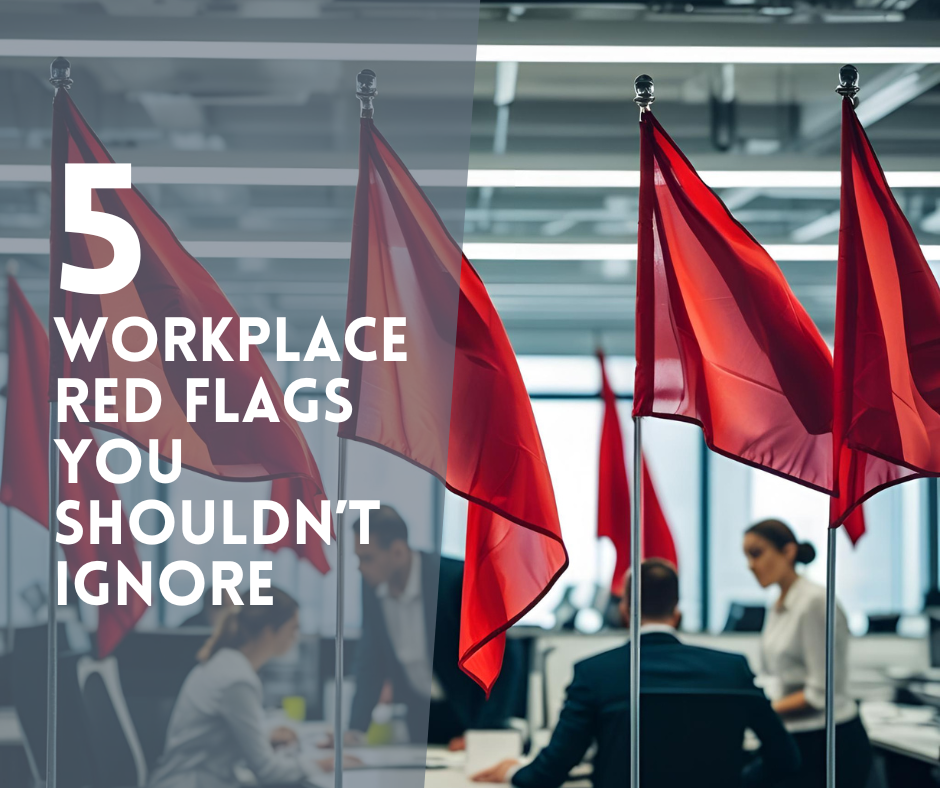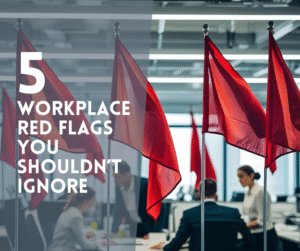5 Workplace Red Flags You Shouldn’t Ignore

Workplace harassment assumes many guises, some subtle, others blunt, but always damaging. Identifying when your workplace is unsafe and unhealthy is essential. Whether it is through verbal abuse, manipulation, or improper conduct, workplace harassment disintegrates your sense of dignity and well-being. These are five red flags related to workplace harassment that you should never overlook.
1. Insufferable Unacceptable Comments or Humor
When joking remarks turn sexist, racist, or otherwise offensive, they’re not “just joking” anymore. This is a typical early indicator of a toxic work environment. Inappropriately repeated remarks build a hostile work environment, especially when leadership overlooks them or dismisses them with a laugh. Sexual harassment often starts with verbal innuendo or boundary-pushing humor. Don’t ignore these comments and humor as harmless.
Example:
During a company-wide meeting, Olivia, a marketing analyst, presents a quarterly update. Afterwards she overhears a male team member say, “Well, at least her graphs are as attractive as she is.” Several others laugh, and her manager remains silent. Olivia later learns this isn’t the first time such comments have been made after women present.
Why it matters:
Even subtle or offhand remarks, when unaddressed, set the tone for disrespect, and are often a gateway to more explicit harassment.
2. Bullying or Isolation by Supervisors or Colleagues
Being singled out, not being called to a meeting, or being unjustifiably criticized are all signs of targeted harassment. In a toxic work environment, treatments like these are sometimes used to eliminate employees without direct termination. Workplace harassment is not only physical but also mental. When leadership ignores or is complicit in such treatment, it continues a hostile work environment that can directly effect mental health.
Example:
Daniel, a new junior architect, politely declines repeated lunch invitations from his supervisor, Erica, who has been complimenting his appearance and calling him “cute” in private and in front of colleagues. Soon after, he’s pulled from a flagship project with no explanation and reassigned to support work. When he brings it up, HR tells him to “be patient” and not make things uncomfortable.
Why it matters:
Retaliation for setting personal boundaries is harassment. Power imbalances make this especially damaging and difficult to report.

3. Retaliation After Reporting Concerns
If you report mistreatment and then are demoted, relocated to a different working location, or isolated, are all forms of retaliation, and it’s illegal. Problematic workplaces will use these techniques as a way of intimidating victims. Filing a sexual harassment claim, or claim of any type of workplace harassment, should never be accompanied by punishment. Beyond being immoral, retaliation also sets up a climate of fear and gives harassers a sense of empowerment.
Example:
Maya, a customer service rep, files a complaint after her coworker texts her late at night asking what she’s wearing. HR promises to “investigate,” but a week later, Maya is moved to a less desirable shift, removed from the internal team chat, and excluded from team events. Her manager says they’re “trying to keep things neutral.”
Why it matters:
Retaliation discourages survivors and emboldens harassers. It’s not just unethical, and it’s illegal. It sets a tone for the entire team.
4. Failure by HR or Management to Take Action
When supervisors or human resources ignore complaints of workplace harassment is big red flag. When companies claim “zero-tolerance” policies but fail to investigate or hold harassers accountable, it shows that harassment isn’t just tolerated, it’s embedded in the culture. Inaction allows the behavior to continue and escalate; it signals to everyone that safety and dignity are not a priority.
Example:
Carlos, a supervisor, reports that a senior executive regularly touches interns’ shoulders and makes comments like, “You’d be dangerous in heels.” HR responds with, “He’s from a different generation” and suggests Carlos focus on his own team. Six months later, the executive is promoted.
Why it matters: Tolerating harassment at the top sends a clear message: some people are above the rules and can act with impunity. It discourages both victims and allies from coming forward, no matter what the issue. It deepens and normalizes a culture of silence, where harassers are protected and others are left vulnerable.

5. Normalization of Sexual Harassment
Sexual harassment is so pervasive in some businesses that people become desensitized to how harmful and unacceptable iit is. This can take many forms, from inappropriate touch, demeaning messages, or questionable relationships among a manager and a worker whose consent may be compromised. When harassment is tolerated, excused, minimized or ignored, it reinforces a hostile workplace environment.
Example:
Zoe, a 22-year-old production assistant at a film studio, notices that female interns are frequently assigned to work under one director known for making sexual remarks. When she raises concern about it, a colleague says, “Don’t take it personally, it’s how the business works.” The other women involved tell her they don’t want to risk losing future opportunities by speaking up.
Why it matters:
When everyone accepts harassment as the norm, no one feels safe, especially those with less power or job security.

Workplace bullying isn’t always obvious but the harm is always real. Verbal abuse, sexual harassment, bullying, retaliation, and silencing are red flags of a hostile work environment. Harassment and bullying are not conditions of employment, and they should never be normalized, excused or hidden.
If you recognize any of these signs: document the behavior, seek allies, and know your rights. Need help assessing what’s going on? Download our Workplace Conflict Checklist to help you name it, navigate it, and decide what you can do next.
A toxic work environment only transforms when we transform it, not through magic solutions.


